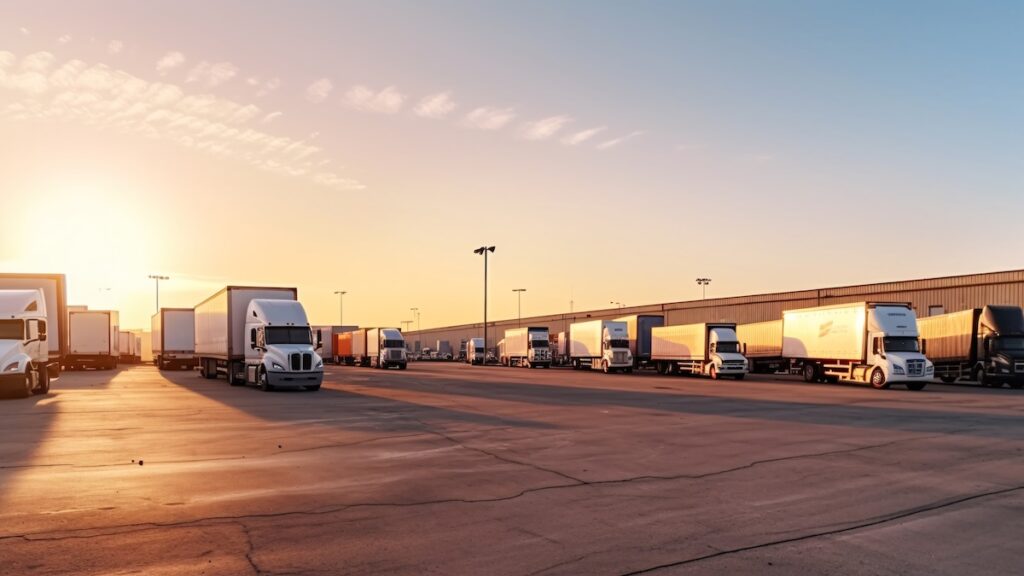Communication is a matter of coordination, safety, and efficiency in transportation and logistics. Freight facilities and weigh stations, from busy gates to warehouse loading bays, depend on timely voice exchanges to manage the constant movement of vehicles, cargo, and personnel. But in these environments, audio isn’t always easy to get right.
Truck yards and distribution terminals are some of the most acoustically difficult spaces to operate in. Noise from diesel engines, brake systems, backup signals, and outdoor exposure all compete with the human voice. Traditional intercom systems struggle in these conditions, often leaving dispatchers and drivers talking past each other, or not at all.
The Harsh Reality of Trucking Environments
Some spaces are simply hard to hear in. Freight operations routinely deal with engine rumble, compressor hiss, reversing alerts, and constant idling, all of which introduce a dense layer of background noise. In open-air areas like terminals and yards, sound bounces off concrete and metal, creating echo and reverberation. Indoors, the acoustics aren’t necessarily better. Loading bays and high-ceiling warehouses amplify every impact, vehicle start, or forklift beep.
When audio clarity breaks down, the consequences can be more than frustrating. A misunderstood instruction at a gate, a misheard bay assignment, or a delayed dock response slows down movement and increases operational risk. The need for reliable voice communication in these settings is practical, immediate, and constant.
Why Traditional Intercoms Fall Short
Conventional analog intercoms, or off-the-shelf consumer models, aren’t built for industrial-grade environments. They often lack the audio processing required to cut through interference or the rugged housing needed to survive outdoor or high-vibration conditions.
Many use basic push-to-talk mechanisms that interrupt the natural flow of communication. In some cases, microphones pick up as much ambient noise as voice, making messages unintelligible. Equipment may degrade quickly under exposure to dust, temperature swings, or vehicle exhaust. These limitations force facilities to work around their systems, rather than depend on them.
To perform reliably in the freight world, intercoms need more than durability. They need intelligent design that adapts to the acoustic challenges of the environment.
IP-Based Intercoms Designed for the Yard, Dock, and Terminal
Digital Acoustics develops intercoms specifically for transportation settings like truck yards, freight terminals, and distribution facilities. The systems are engineered with advanced signal processing, including full-duplex communication, noise reduction and echo cancellation, to maintain clarity even when background noise is present.
These intercoms feature directional microphones and purpose-built enclosures that hold up in dust, heat, vibration, and wind. Integration with SIP/VoIP networks ensures seamless connection to dispatch or access control systems, eliminating the need for isolated endpoints or separate infrastructure.
Installations are adaptable to each part of the site. Guard shacks, pedestal-mounted gates, roll-up dock doors, and warehouse entry points can all be equipped on the same platform. Communication remains unified across both exterior and interior spaces, with centralized control available to security or dispatch personnel.
Smarter Communication for a Demanding Industry
Freight, logistics, and weigh station facilities are high-movement, high-noise environments. That reality isn’t going away, and neither is the need for precise coordination across the yard. Today’s operations call for intercom systems that do more than connect two points. They must support site-wide communication, integrate across systems, and deliver clear speech in the noisiest parts of the property.
Digital Acoustics solutions are tuned to address the specific noise patterns present in transportation: low-frequency engine hum, brake air releases, and mechanical reverb are all filtered through targeted processing. The result is a system that captures human voice accurately, whether a driver is speaking from inside the cab or a warehouse manager is paging across multiple zones.
Just as important, facilities no longer have to piece together multiple platforms to serve different areas. A single, IP-based system can handle two-way intercom, public address, and paging streamlining operations and reducing points of failure.
As freight sites evolve, so should their communication tools. For operations teams evaluating system upgrades, the question is no longer whether better audio is possible. It’s whether your current system is still meeting the demands of the real world.
